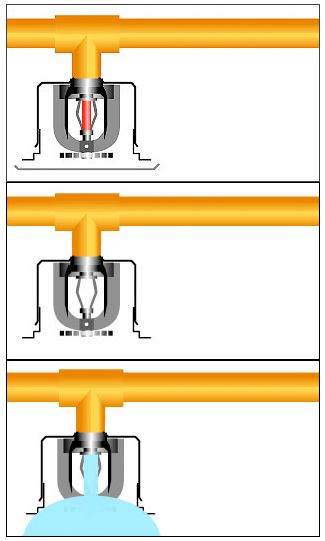 How Fire Sprinklers Work: The typical sprinkler head consists of a plug that is held in place by a trigger mechanism. The most common type of trigger is a glass ampule filled with a glycerin-based liquid that expands when heated. A less commonly used type of trigger consists of two metal plates held together by a solder point. When the solder melts, two spring arms pull the plates apart, releasing the plug.
How Fire Sprinklers Work: The typical sprinkler head consists of a plug that is held in place by a trigger mechanism. The most common type of trigger is a glass ampule filled with a glycerin-based liquid that expands when heated. A less commonly used type of trigger consists of two metal plates held together by a solder point. When the solder melts, two spring arms pull the plates apart, releasing the plug.
This liquid is designed to expand and break the tube at a certain temperature. Most sprinklers are designed to break at 155 degrees. In the average sized room, a 5mm diameter ampule will usually break in about one to one and a half minutes from contact with a heat source. Ampules as thin as 1mm are manufactured for a faster response time.
In new construction the pipes are easily installed in walls or ceiling along with other plumbing. Every few feet a connector is placed in the pipe to allow the water to flow out of the piping system.
The fire sprinkler acts as plug to hold the water in until it is needed.In the fire sprinkler is a heat-sensitive trigger, usually a glass tube filled with liquid, or a solder link.
When heat from a fire reaches the fire sprinkler, the glass will shatter or the solder melt, releasing the water.
Sprinklers that are not directly affected by the fire will not activate.
90% of fires are stopped by a single sprinkler.